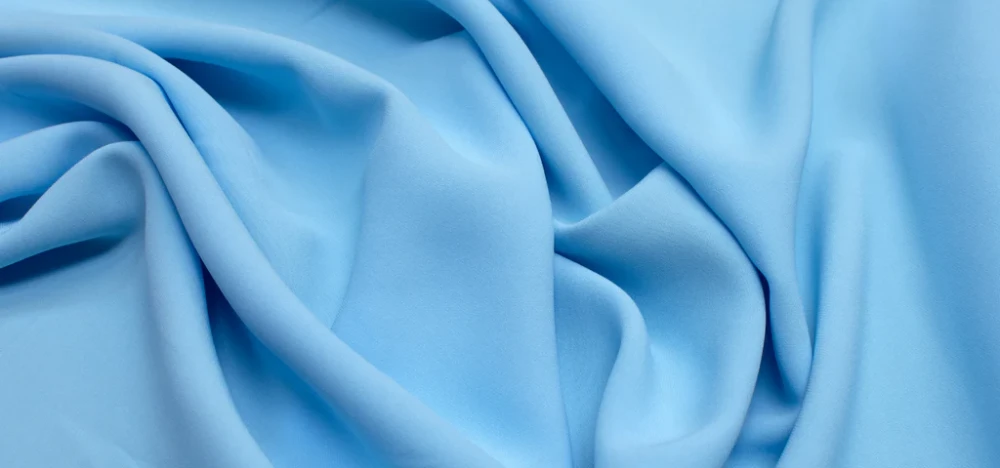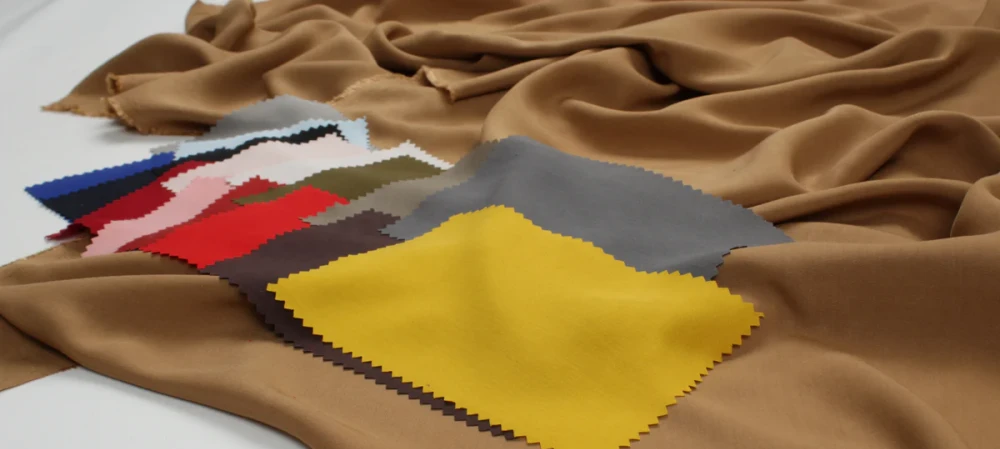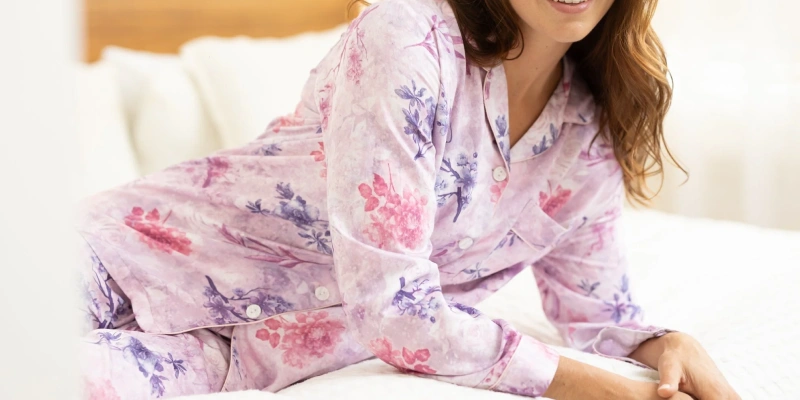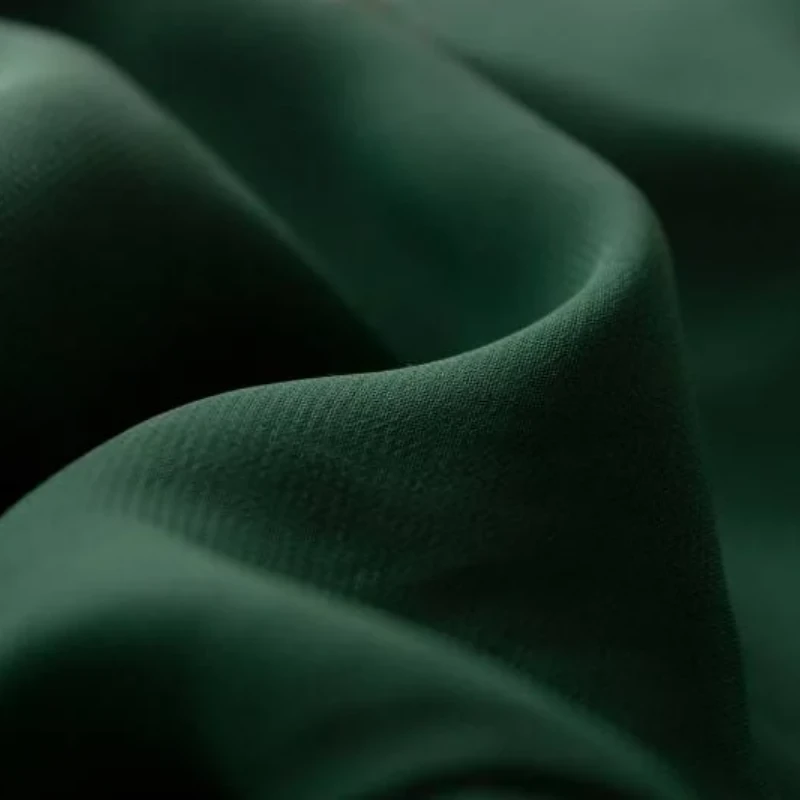If you’re wondering, rayon is sustainable for modern clothing brands, you’re not alone. Sustainability drives many choices in the fashion world today, especially for high-end brands like Friendtex.
You see more shoppers willing to pay extra for sustainably produced items, and Gen Z leads this trend. Investors also look for brands with clear sustainability targets.
Most people want products that are easy to donate.
Many go out of their way to buy sustainable brands.
Choosing sustainable materials isn’t just good for the planet—it keeps your brand relevant and trusted.
Key Takeaways
Rayon can be a sustainable fabric if sourced responsibly. Look for certifications like FSC and GOTS to ensure eco-friendly practices.
Choosing closed-loop production systems reduces waste and pollution. This method recycles water and chemicals, making rayon more sustainable.
Bamboo rayon is a highly renewable option. It requires less water and fewer pesticides, making it a better choice for eco-conscious brands.
Always check for supplier certifications and ask about their sustainability practices. This helps you make informed choices for your brand.
Friendtex offers a range of sustainable rayon products. Their commitment to eco-friendly materials and practices can help your brand stand out.
What Is Rayon?

Rayon Basics
Rayon is a fabric you probably see every day, but you might not know much about it. People often call it a “semi-synthetic” fiber. That means it starts with something natural, but factories use science to turn it into soft, wearable fabric. You get the best of both worlds—nature and technology.
So, what goes into making rayon? The main ingredient is cellulose. Cellulose comes from plants, and manufacturers usually get it from wood pulp. Sometimes, they use bamboo or even cotton scraps. Here’s a quick look at the most common sources:
Wood pulp (from trees like eucalyptus, spruce, beech, and pine)
Bamboo pulp
Cotton linters (the short fibers left after ginning cotton)
You can see why rayon feels so soft and smooth. It starts with natural plant fibers!
Tip: If you want a fabric that feels like silk but costs less, rayon is a great choice. It drapes beautifully and feels cool against your skin.
Rayon Production
You might wonder how those plant fibers turn into the fabric you wear. The process is pretty interesting and involves both chemistry and engineering. Factories use a few key steps to make rayon from raw materials. Here’s a simple breakdown:
Step | Description |
|---|---|
Selection of Raw Material | Cellulose comes from wood pulp or cotton linters, usually from trees with lots of cellulose. |
Chemical Treatment | Workers treat the cellulose with sodium hydroxide to make it ready for the next step. |
Visco Solution Formation | The treated cellulose dissolves into a thick, syrupy liquid called viscose. |
Extrusion and Regeneration | The viscose gets pushed through tiny holes into a bath, where it turns back into solid fibers. |
Washing and Drying | The new fibers get washed to remove chemicals and then dried, which gives rayon its final feel. |
This process lets you turn trees or bamboo into soft, shiny fabric. Rayon’s unique journey from plant to pajama is what makes it so popular in modern clothing.
Is Rayon Sustainable?

Environmental Impact
When you ask, Is rayon sustainable, you need to look at how it affects the planet. Rayon starts with plant-based cellulose, which sounds eco-friendly. However, the way manufacturers make rayon can cause problems for the environment. Here’s what you should know:
The raw material for rayon often comes from wood pulp. This leads to deforestation and loss of natural resources.
Thousands of hectares of rainforest are cut down each year just to plant trees for rayon production. This contributes to climate change, soil erosion, and loss of biodiversity.
The process uses chemicals like carbon disulfide. These chemicals can harm workers and pollute water and air if not managed well.
Factories release hazardous chemicals into the environment. Water and air pollution can result if companies do not use proper controls.
You might wonder how rayon compares to other fabrics. Let’s look at biodegradability:
Material | Biodegradability Speed |
|---|---|
Rayon | Breaks down easily, slower than cotton |
Cotton | Significantly faster than rayon |
Polyester | Non-biodegradable |
Rayon breaks down faster than synthetic fibers like polyester, but cotton is still the winner when it comes to compostability. Cotton samples lose up to 78% of their mass, making them one of the most sustainable fabrics for biodegradability.
Polyester, on the other hand, is among the least sustainable fabrics because it does not break down at all.
Water and energy use also matter when you consider sustainability. To make one kilogram of rayon, factories use between 110 and 200 gallons of water. The energy needed is about 100 megajoules per kilogram.
If you compare this to other sustainable fabrics, rayon uses more resources than cotton but fewer than some synthetic options.
Note: If you want to avoid the least sustainable fabrics, look for options that use less water and energy and break down naturally.
Sourcing and Certifications
You can make rayon more sustainable by choosing the right sources and certifications. Not all rayon is created equal. Some companies use wood from responsibly managed forests or bamboo, which grows quickly and needs fewer resources.
When you see rayon made from FSC-certified wood or bamboo, you know it comes from a sustainable source.
Certifications help you spot sustainable fabrics. Here are some of the most recognized ones:
Certification Name | Purpose | Required Certification Level |
|---|---|---|
Canopy Hot Button Report | Guides companies to protect endangered forests and promote eco-friendly materials. | Companies must assess supply chains and implement traceability, evaluated through an annual assessment. |
GOTS Global Organic Textile Standard | Sets strict ecological and labor criteria for textiles. | Applies to every stage of production for products containing at least 70% certified organic fibers. |
The Sustainable Fibre Alliance | Promotes sustainable practices in fiber production. | Fiber production must follow practices like crop rotation and humane treatment of animals. |
The Canopy Hot Button Report asks companies to check their supply chains and use alternative fibers.
GOTS requires at least 70% certified organic fibers and strict ecological standards.
The Sustainable Fibre Alliance promotes crop rotation and humane treatment of animals.
Friendtex takes sustainability seriously. You get rayon products made with closed-loop production systems. This means almost all chemicals and water get recovered and reused, cutting waste and pollution.
Brands like TENCEL and LENZING™ ECOVERO™ use this method, which slashes water use and carbon emissions by half compared to traditional viscose. Friendtex also holds certifications like GOTS, Amfori, Sedex, and more, showing a strong commitment to sustainable fabrics and ethical practices.
If you want your brand to stand out, choose rayon from suppliers who focus on sustainability. Look for certifications and ask about sourcing. You can avoid the least sustainable fabrics and offer products that align with your values.
When you pick the most sustainable fabrics, you help protect forests, reduce pollution, and support responsible manufacturing.
Tip: Always check for certifications and ask your supplier about their sustainability practices. This helps you make better choices for your brand and the planet.
Friendtex Rayon Products
Friendtex Rayon Pajamas

You want pajamas that feel soft and keep you comfortable all night. Friendtex rayon pajamas deliver just that. The fabric is lightweight and breathable, so you stay cool in summer and cozy in winter. You get moisture-wicking technology that pulls sweat away from your skin.
The tagless design and flatlock seams mean you never feel itchy or bothered by rough edges. You can customize colors, patterns, and sizes to match your brand’s style.
Here’s what makes Friendtex rayon pajamas stand out:
Feature | Result |
|---|---|
Improvement in Comfort | 88% of users noticed better nighttime comfort with Friendtex’s tagless designs. |
Design Features | Flatlock seams and tagless printing boost comfort. |
Fabric Technology | Breathable, moisture-wicking fabrics increase satisfaction. |
You get pajamas made from sustainable fabrics, including bamboo rayon and cotton-rayon blends. Friendtex uses eco-friendly fabric options to help your brand meet sustainable goals.
Friendtex Rayon Nightgown
If you want a nightgown that feels gentle on your skin and supports the planet, Friendtex has you covered. The rayon nightgowns use sustainable fabrics and eco-friendly fabric blends.
You can choose from bamboo rayon, cotton-rayon, or spandex blends for extra stretch. Friendtex lets you pick the style, color, and fit that works best for your brand.
You get more than comfort. Friendtex ensures sustainable production with these practices:
The nightgowns are gentle on skin and the planet.
Friendtex uses the Lyocell process, which recycles water and solvents to lower environmental impact.
The company holds certifications like GOTS, OEKO-TEX, and ISO, proving ethical and sustainable manufacturing.
You can offer your customers sleepwear that feels luxurious and supports sustainable fashion.
Friendtex Rayon Robe
You want a robe that feels soft and looks stylish. Friendtex rayon robes use sustainable fabrics to deliver comfort and breathability. The fabric is smooth and moisture-wicking, so you stay dry and relaxed.
You can pick from bamboo rayon, cotton-rayon, or spandex blends. Friendtex lets you customize the robe’s length, color, and design for your brand.
Friendtex focuses on sustainable practices. The robes use eco-friendly fabric and sustainable materials. You get products that support your brand’s commitment to sustainable fashion. The robes are perfect for anyone who wants luxury and sustainability in one package.
Tip: If you want to build a premium sleepwear line, choose Friendtex rayon products. You get sustainable fabrics, eco-friendly fabric blends, and endless customization options.
Sustainable Alternatives
When you want to build a truly sustainable clothing brand, you need to look beyond traditional rayon. Let’s explore some of the most popular sustainable alternatives and see how they stack up.
Bamboo Rayon
Bamboo rayon stands out as a top choice for eco-conscious brands. Bamboo grows quickly and needs little water or pesticides. This makes it a highly sustainable resource. When you choose bamboo rayon, you help reduce the environmental impact of your products.
Here’s a quick comparison:
Benefit | Bamboo Rayon | Traditional Rayon |
|---|---|---|
Sustainability | Highly renewable resource | Less sustainable |
Water Requirements | Requires less water | Higher water usage |
Pesticide Requirements | Requires fewer pesticides | Higher pesticide usage |
Biodegradability | Biodegradable | Not biodegradable |
You can see why bamboo rayon is a favorite for brands that want to offer sustainable fabrics. Friendtex offers bamboo rayon options for pajamas, nightgowns, and robes. Your customers will love the soft feel, and you can feel good about making a sustainable choice.
Lyocell and Modal
Lyocell and modal are two more sustainable options you should consider. Lyocell uses a closed-loop system that recycles 99.8% of solvents. This means almost no pollution and a much smaller environmental footprint. Modal can also be sustainable, depending on how it’s made.
Fiber Type | Production Process | Environmental Impact |
|---|---|---|
Lyocell | Closed-loop system | 99.8% solvent recycling, minimal pollution |
Conventional Rayon | Toxic chemicals used | Significant pollution due to chemical release |
Lyocell’s process keeps the environment cleaner and safer. Friendtex uses lyocell and modal in their sustainable fabrics lineup, giving you more ways to meet your sustainability goals.
Rayon Blend Options
Rayon blends give you flexibility and more sustainable choices. You can mix rayon with bamboo, cotton, or spandex to create unique fabrics. These blends often use less water and energy. They also last longer, which means less waste.
Friendtex offers a variety of rayon blends, including bamboo rayon and cotton-rayon. These blends help you create sustainable products that stand out in the market. You get comfort, durability, and a strong story for your eco-conscious customers.
Tip: When you choose sustainable fabrics like bamboo rayon, lyocell, modal, or blends, you show your commitment to a better future. Friendtex makes it easy to find the right sustainable option for your brand.
Pros and Cons for Brands
Sustainability Advantages
When you choose rayon for your clothing brand, you tap into several sustainable benefits. You get access to closed-loop systems that reuse water and chemicals, which helps cut down on waste and emissions.
Responsible sourcing of cellulose means you can support forests managed with sustainable practices. Many suppliers now use environmentally friendly dyes and finishes, so your products align with sustainable values.
Here’s a quick look at the main sustainable advantages:
Sustainability Advantage | Description |
|---|---|
Closed-loop systems | These systems reuse water and chemicals, reducing waste and emissions. |
Responsible sourcing of cellulose | Cellulose comes from sustainably managed forests. |
Eco-friendly dyes and finishes | Dyes and finishes support sustainable textile production. |
Appeal to eco-conscious brands | Sustainable manufacturing boosts your brand’s market appeal. |
You also want to know how rayon stacks up against other fabrics in terms of carbon footprint. Take a look at this comparison:
Fibres | Estimated Kg CO2 equivalent produced per Kg fabric |
|---|---|
Wool | 46 |
Acrylic | 38 |
Viscose (Rayon) | 30 |
Cotton | 28 |
Silk | 25 |
Polyester | 21 |
Polyurethane | 20 |
Flax linen | 15 |
Rayon’s carbon footprint sits between wool and cotton, making it a competitive choice for sustainable brands. You can lower your impact by choosing suppliers who use sustainable production methods.
If you want your brand to stand out, focus on sustainable sourcing and closed-loop systems. These steps help you build a reputation for eco-friendly fashion.
Considerations for Clothing Brands
You face some challenges when sourcing sustainable rayon. Sourcing materials responsibly is tough because 200 million trees are cut down every year for textiles, and some rayon still comes from ancient forests.
The production process can be highly toxic, which puts workers and the environment at risk. Ethical concerns also exist, especially in regions with a history of forced labor or pollution.
Here are some things you should keep in mind:
Sourcing sustainable materials is not always easy.
The production process can be toxic if not managed well.
Ethical concerns may arise from certain suppliers.
Cost is another factor. Certified sustainable rayon often costs more than conventional options, but you can find competitive prices from suppliers in China, India, and Indonesia.
For example, woven rayon from China costs $1.45–$1.65 per meter, while premium blends and certified options may be higher. Some brands have saved money by switching to rayon blends, which can reduce costs and still offer a sustainable touch.
Material Type | Cost per Meter (USD) | Notes |
|---|---|---|
Basic Viscose Rayon | $1.35–$1.65 | Standard greige woven rayon |
Premium Rayon-Linen Blends | $2.10–$2.85 | Enhanced properties |
Woven Rayon from China | $1.45–$1.65 | Competitive pricing with certifications |
Woven Rayon from Indonesia | $1.50–$1.70 | FSC-certified, better compliance |
U.S. and Europe | Higher prices | Small orders, branded distributors |
You need to evaluate suppliers carefully. Certifications matter because they protect your brand’s reputation and help you meet new regulations like the EU’s Textile Strategy 2030.
You should ask suppliers for updated certifications, conduct audits, and use third-party firms for validation. Look for renewable raw materials, energy efficiency, and closed-system production to ensure your products remain sustainable.
Tip: Always check for certifications and ask about sourcing practices. This helps you avoid risks and keeps your brand’s sustainable promise strong.
Conclusion
You want your brand to stand out with sustainable choices. Rayon can be a sustainable option when you focus on responsible sourcing, closed-loop systems, and eco-friendly certifications. Friendtex leads the way with sustainable practices and high-quality rayon products. Here’s a quick look at what matters:
Advancement | Water Usage | Chemical Usage |
|---|---|---|
Closed-loop dyeing systems | Less water needed | Sustainable fabrics |
Recycles solvents | Lowers resource use |
To build a sustainable collection, always check certifications, ask suppliers about their materials, and share your sustainable story. Explore Friendtex’s sustainable rayon sleepwear to elevate your brand.
FAQ
Is rayon really eco-friendly?
Rayon can be eco-friendly if you choose products made from responsibly sourced materials and closed-loop processes. Always check for certifications like FSC or GOTS. These show you that the fabric comes from sustainable sources and safe production methods.
How do I care for rayon sleepwear?
Wash your rayon sleepwear in cold water. Use a gentle cycle. Air dry or use low heat. Avoid bleach. This keeps your pajamas, nightgowns, and robes soft and long-lasting.
What makes Friendtex rayon products sustainable?
Friendtex uses certified sustainable materials, like bamboo rayon and FSC-certified wood pulp. The company follows eco-friendly production methods and holds certifications such as GOTS and OEKO-TEX. You get high-quality, responsibly made sleepwear.
Can rayon sleepwear cause skin irritation?
Rayon feels soft and smooth. It’s usually gentle on sensitive skin. Friendtex uses hypoallergenic blends and safe dyes, so you can wear their sleepwear comfortably, even if you have delicate skin.
Why should I choose rayon over polyester?
Rayon breathes better than polyester. It feels softer and wicks moisture away from your skin. If you want comfort and a more sustainable option, rayon is a great choice for your sleepwear collection.


